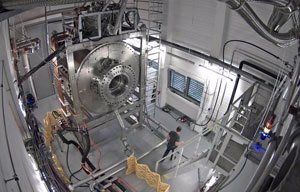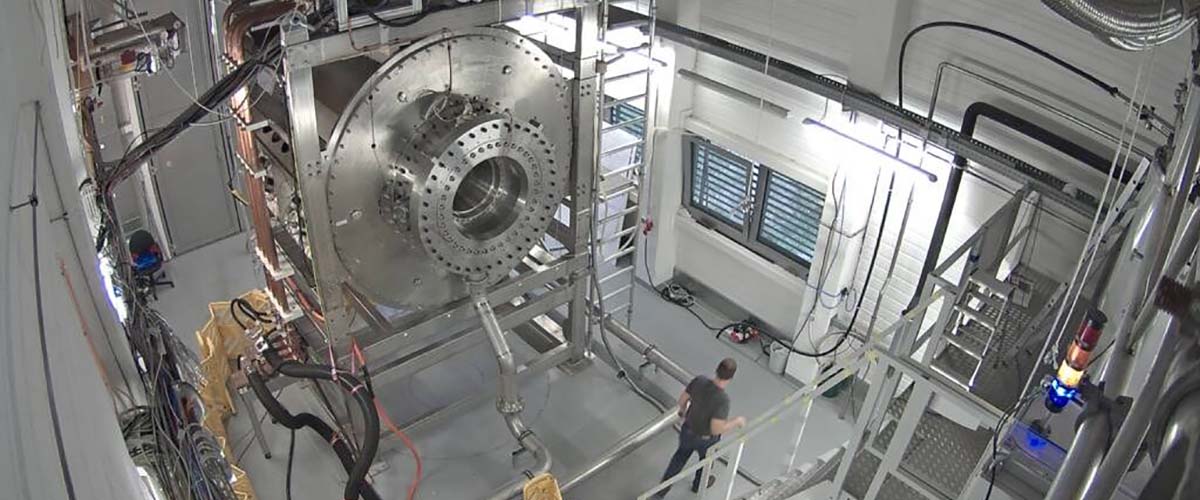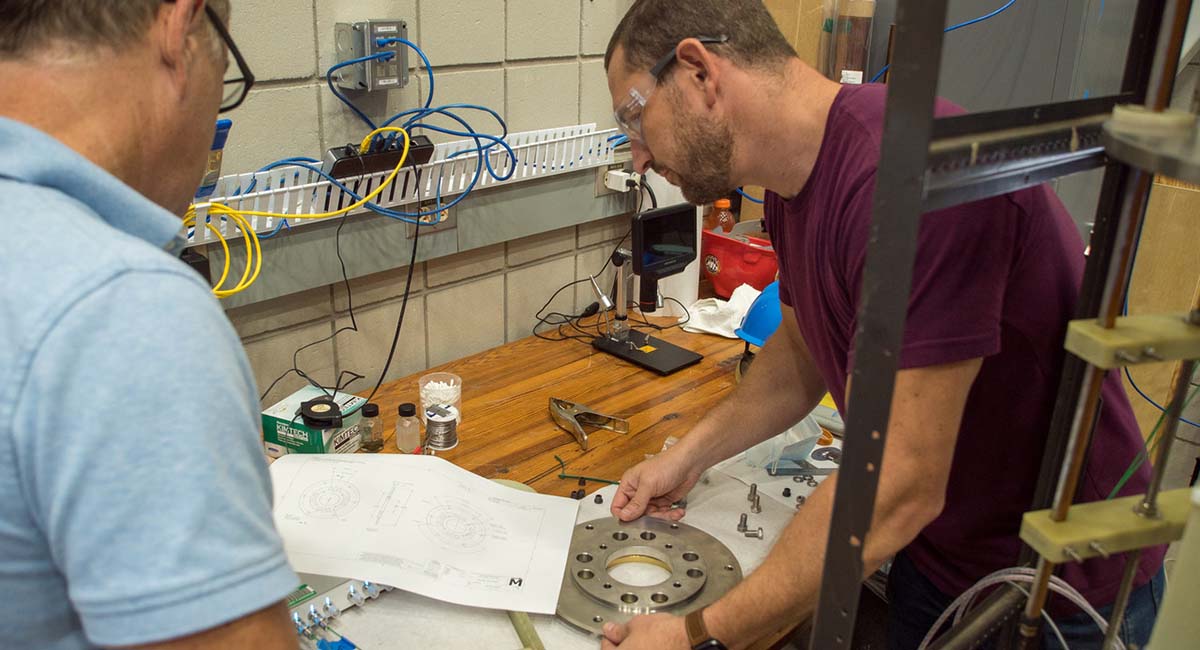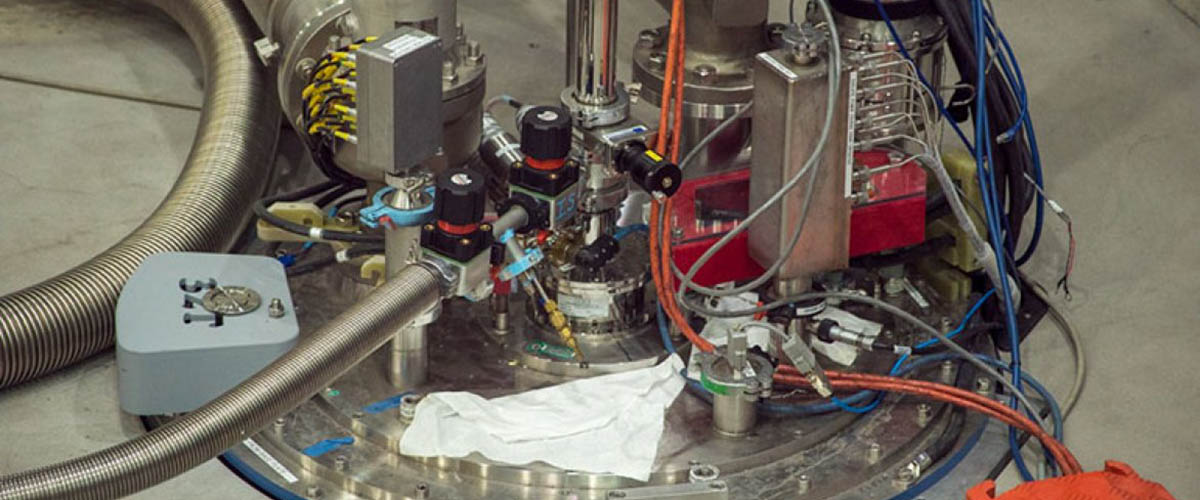Contact: Kristin Roberts
TALLAHASSEE, Fla. — A ground-breaking series-connected hybrid magnet, built by the MagLab and Germany's Helmholtz Centre Berlin and designed for neutron scattering experiments, successfully reached 26 tesla on October 16, crushing the previous record of 17 tesla. As an added bonus, the magnet offers researchers much more space to perform their complex scattering experiments.

The HZB magnet in Berlin.
Using this magnet system, scientists scatter beams of particles to investigate the magnetism in exotic materials on an atomic scale.
"During construction, I worried about the risks, because this is an entirely new magnet design for neutron scattering," said MagLab Director Greg Boebinger. "Now I can't wait to see the reward: the exciting science that cannot be performed anywhere other than in this extraordinary, high-performance magnet system."
During the magnet testing process, most superconducting magnets experience expensive and time-consuming shutdowns, or quenches. This magnet, however, reached full field without a quench and only took two months to test.
"This successful series-connected hybrid magnet is the result of more than 120,000 staff-hours at the MagLab," said Mark Bird, the MagLab's director of magnet science and technology in charge of the Berlin project. "It could not have happened without the incredible dedication and commitment of dozens of people here at the MagLab and at HZB."
The Berlin magnet was tested in a temporary location at HZB, but in coming months, will be moved to the neutron guide-hall and integrated with the rest of the instrument. Scientists interested in future use of the magnet should directly contact HZB.






